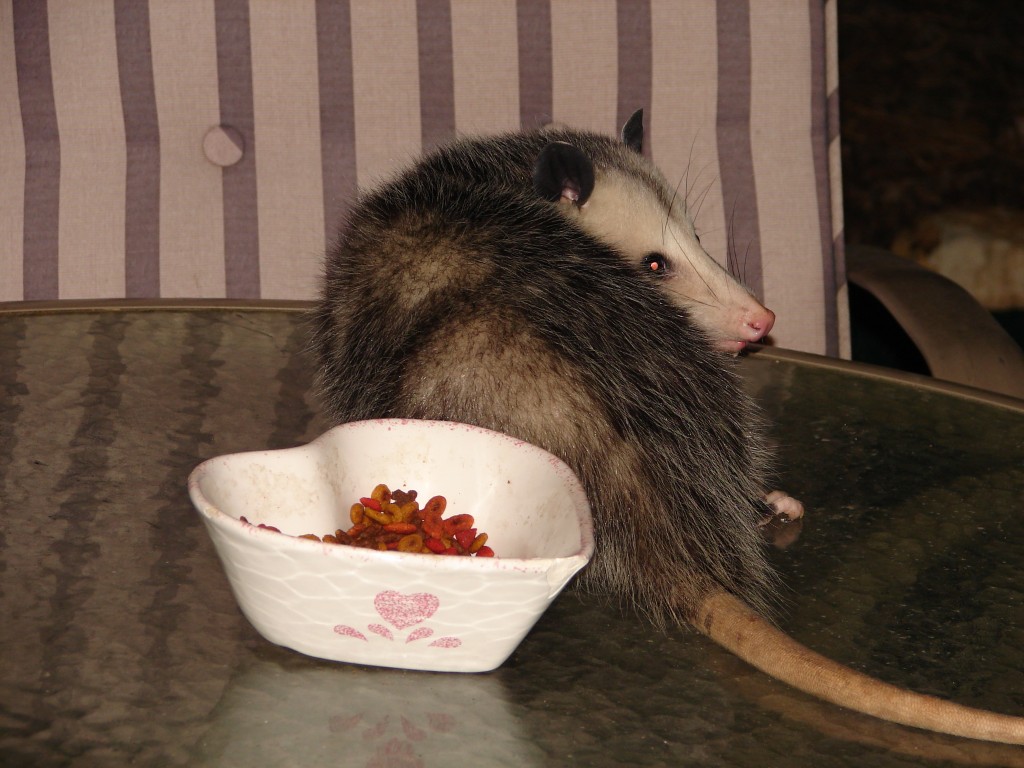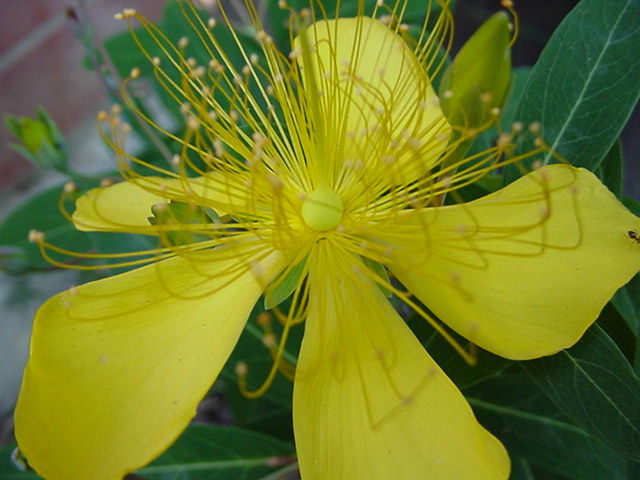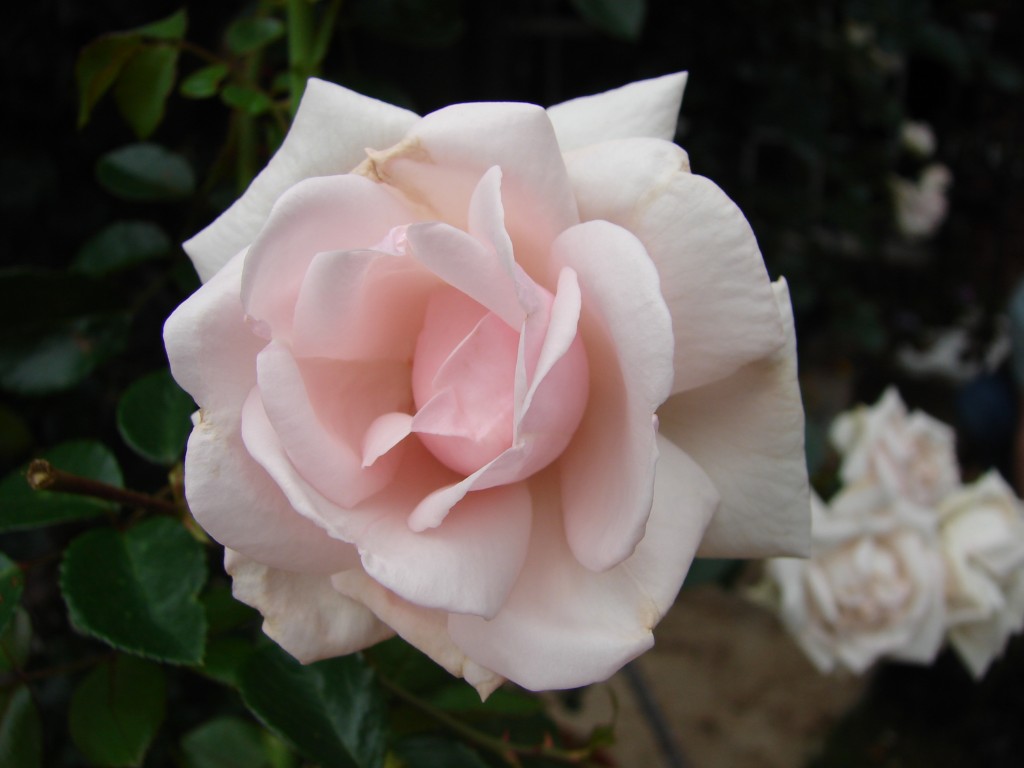We have a possum that has been coming to our backyard to eat the cat food on a regular basis. We don’t have any problem with this at all since the cats seem to be cool with him and he is actually very tidy and considerate. They can look a little ferocious though, and the dogs are definitely not fond of him.
Did you know that opossums are the only marsupials still living in North America? In fact, the only species of opossum living in North America is the the Virginia opossum or common opossum. The classification of “marsupial” comes from the fact that they have a marsupiuim which is a pouch where they rear their young until they are old enough to make it on their own. The sharp claws and long bald prehensile tail helps them climb trees, where they spend a lot of their time..
Opossums are scavengers and will eat just about anything including grass, nuts, fruit, mice, birds, insects, worms, snakes, and even chickens. If he goes after our chickens, we’ll have to talk!
We haven’t seen him for a couple of weeks, so maybe – this being spring and all – he is actually a she and otherwise occupied right now.
















